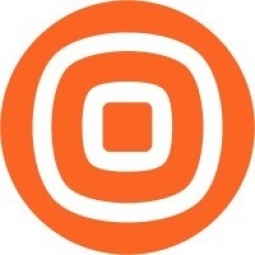Technology Category
- Networks & Connectivity - Bluetooth
- Networks & Connectivity - WiFi
Applicable Industries
- Electronics
- Healthcare & Hospitals
Use Cases
- Disease Tracking
- Inventory Management
Services
- Hardware Design & Engineering Services
About The Customer
Silver Monitor is a company that provides health tracking devices for the elderly. Their product monitors the general health of the elderly and alerts medical professionals and family members of any irregularities. The company needed a solution that could collect live data from the devices, regardless of the user's location, and feed it to their central servers. They required a wireless-based IoT solution that could provide full data coverage and support multiple network profiles. The company also needed to manage data traffic and IoT SIM subscriptions effectively to optimize their business operations.
The Challenge
Silver Monitor, a health tracking device for the elderly, faced the challenge of collecting live data from devices and feeding them to their central servers. The elderly, being mobile like everyone else, required a solution that could work both indoors and outdoors. Traditional connectivity options like WiFi and Bluetooth had limitations in terms of coverage and distance. Silver Monitor required a wireless-based IoT solution that could provide full data coverage and support multiple network profiles. The devices had SIM cards installed, which needed to be managed effectively. The company also needed a solution to manage data traffic and IoT SIM subscriptions to optimize their business operations.
The Solution
Infobip’s IoT solution provided a comprehensive solution to Silver Monitor's challenges. The solution enabled data connectivity over SIM cards installed in the smart watch devices, allowing them to connect to the central server. This allowed the server to interpret the data and alert medical staff and family members. The solution also provided full connectivity management, including support of SIM lifecycle state transitions, which was crucial for time-critical data. Infobip’s solution also allowed Silver Monitor to distinguish between hardware and software issues, enabling them to deploy the correct response. The solution provided centralized connectivity management, allowing for easy activation and deactivation of device IoT SIM cards, which was beneficial for subscription-based services. Infobip also provided personalized client support and free IoT SIM cards for the pilot project, helping Silver Monitor position themselves better in the healthcare market.
Operational Impact

Case Study missing?
Start adding your own!
Register with your work email and create a new case study profile for your business.
Related Case Studies.

Case Study
Remote Temperature Monitoring of Perishable Goods Saves Money
RMONI was facing temperature monitoring challenges in a cold chain business. A cold chain must be established and maintained to ensure goods have been properly refrigerated during every step of the process, making temperature monitoring a critical business function. Manual registration practice can be very costly, labor intensive and prone to mistakes.

Case Study
Hospital Inventory Management
The hospital supply chain team is responsible for ensuring that the right medical supplies are readily available to clinicians when and where needed, and to do so in the most efficient manner possible. However, many of the systems and processes in use at the cancer center for supply chain management were not best suited to support these goals. Barcoding technology, a commonly used method for inventory management of medical supplies, is labor intensive, time consuming, does not provide real-time visibility into inventory levels and can be prone to error. Consequently, the lack of accurate and real-time visibility into inventory levels across multiple supply rooms in multiple hospital facilities creates additional inefficiency in the system causing over-ordering, hoarding, and wasted supplies. Other sources of waste and cost were also identified as candidates for improvement. Existing systems and processes did not provide adequate security for high-cost inventory within the hospital, which was another driver of cost. A lack of visibility into expiration dates for supplies resulted in supplies being wasted due to past expiry dates. Storage of supplies was also a key consideration given the location of the cancer center’s facilities in a dense urban setting, where space is always at a premium. In order to address the challenges outlined above, the hospital sought a solution that would provide real-time inventory information with high levels of accuracy, reduce the level of manual effort required and enable data driven decision making to ensure that the right supplies were readily available to clinicians in the right location at the right time.

Case Study
Gas Pipeline Monitoring System for Hospitals
This system integrator focuses on providing centralized gas pipeline monitoring systems for hospitals. The service they provide makes it possible for hospitals to reduce both maintenance and labor costs. Since hospitals may not have an existing network suitable for this type of system, GPRS communication provides an easy and ready-to-use solution for remote, distributed monitoring systems System Requirements - GPRS communication - Seamless connection with SCADA software - Simple, front-end control capability - Expandable I/O channels - Combine AI, DI, and DO channels

Case Study
Driving Digital Transformations for Vitro Diagnostic Medical Devices
Diagnostic devices play a vital role in helping to improve healthcare delivery. In fact, an estimated 60 percent of the world’s medical decisions are made with support from in vitrodiagnostics (IVD) solutions, such as those provided by Roche Diagnostics, an industry leader. As the demand for medical diagnostic services grows rapidly in hospitals and clinics across China, so does the market for IVD solutions. In addition, the typically high cost of these diagnostic devices means that comprehensive post-sales services are needed. Wanteed to improve three portions of thr IVD:1. Remotely monitor and manage IVD devices as fixed assets.2. Optimizing device availability with predictive maintenance.3. Recommending the best IVD solution for a customer’s needs.









